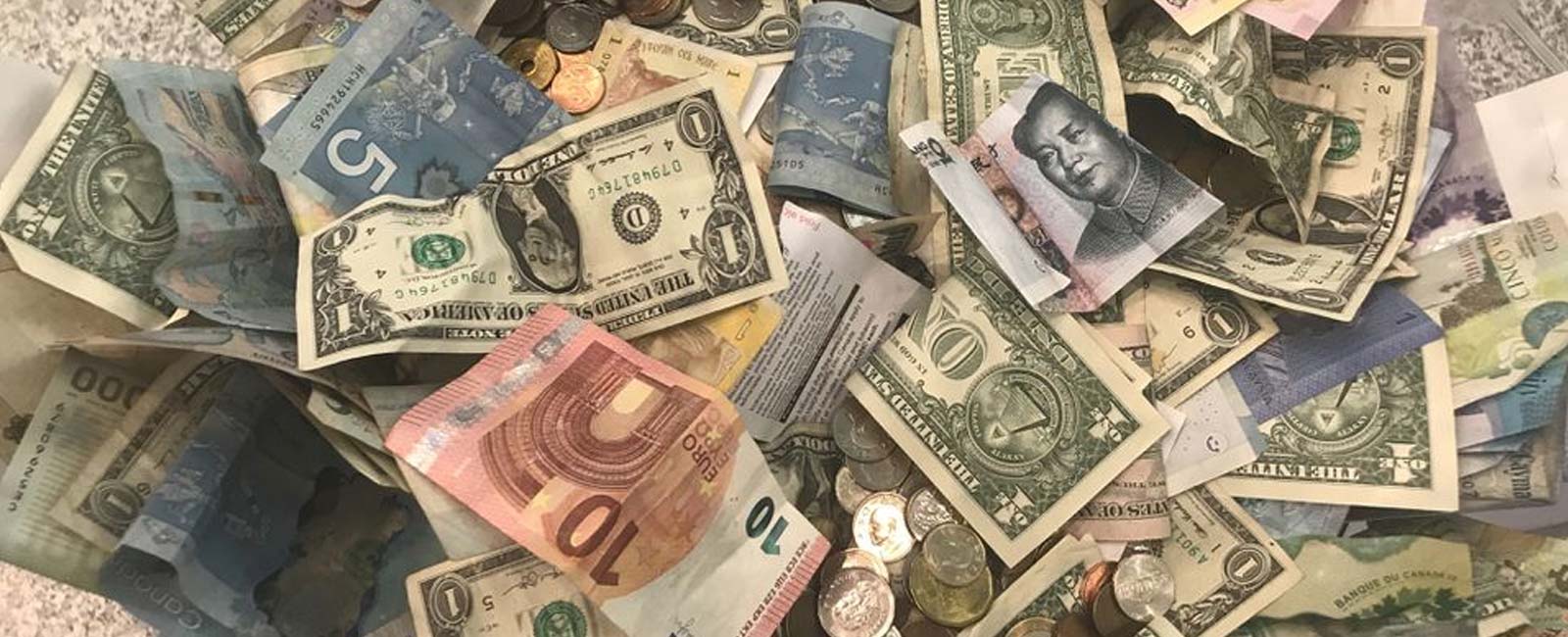How a turbo-charged dollar is zooming past several Asian currencies

KARACHI: The Pakistani rupee has weakened by approximately 27%, or over Rs40, against the US dollar over the last 10 months, since the start of the current fiscal year 2022-23, as the currency recently surpassed the critical threshold of 200 against the greenback. There are fears it may further lose its value, however, Pakistan is not the only country that is facing the depreciation of its currency.
There are a host of other countries — dubbed as emerging markets — that are facing a similar currency weakness, which is making their economies unstable and investors pensive. Japan and India are its casebook examples.
In Pakistan’s case, the rupee depreciation has been attributed to policies of the previous PTI-led government, which adopted a market-based exchange rate and its accumulated impact eventually gave a heavy jolt to the currency over the past several months.
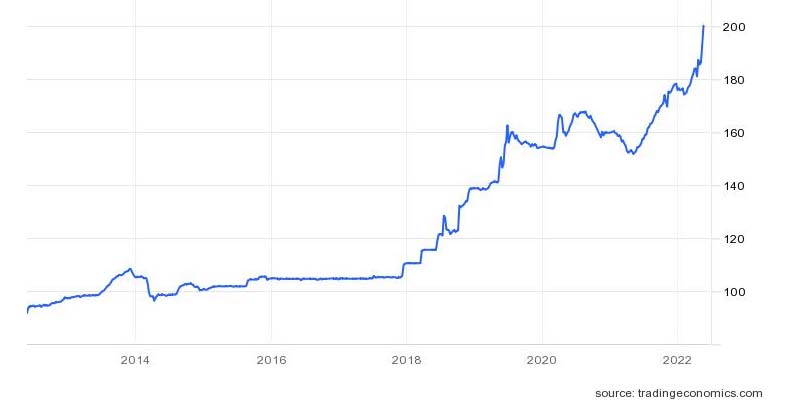
From a general perspective, while looking at international economies, the phenomenon has been largely kick-started by the increase in the policy rate by the US Fed, encouraging international investors to repatriate dollars from risky markets where current account balances are posing a threat and are spiralling into bigger deficits.
The rising dollar has significant effects on the global economy. The implications of a stronger dollar for financial markets and the economy are also more complex than many realise, making the path ahead riskier for investors and policymakers alike.
Let’s take a look at the parity between the US dollar and other currencies.
Indian rupee
Amid persistent foreign fund outflows, a stronger US dollar, and soaring energy prices, the Indian rupee, last week, notched an all-time low of 77.8 against the US currency. According to a report published in Financial Express, the Indian currency depreciated by over 4% since the beginning of the year.
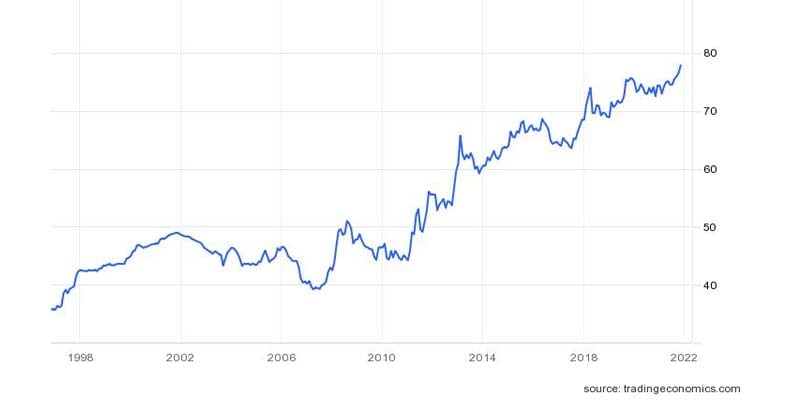
According to Trading Economics, the Indian rupee is expected to trade at 77.76 by the end of this quarter. “Looking forward, we estimate it to trade at 78.66 in 12 months,” it noted.
Japanese yen
According to Trading Economics, last week, the Japanese yen strengthened to around 127 against the US dollar, a level not seen in a month, as investors rushed to buy the safe-haven currency on widespread risk aversion amid a worsening global economic outlook.
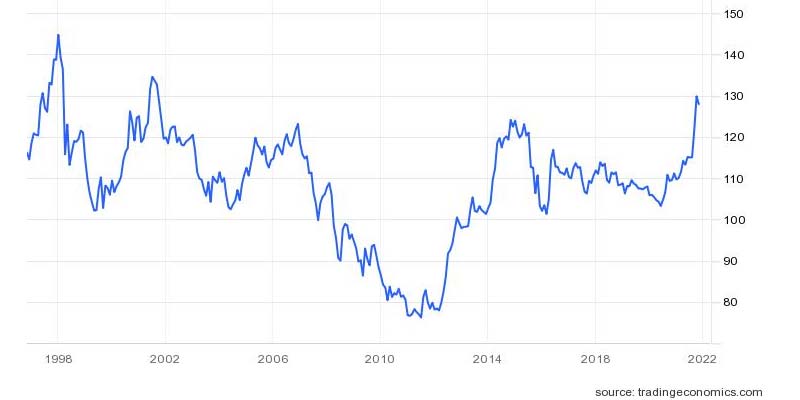
The Japanese Yen is expected to trade at 128.63 by the end of this quarter, according to analysts' expectations. “Looking forward, we estimate it to trade at 130.73 in 12 months,” it noted.
Turkish lira
For the Turkish currency, surging inflation and recession worries weakened the currency to 15.9 against the US dollar last week. The lira is edging closer to the all-time low of 18.4 by December.
Soaring energy prices have lifted Turkey’s inflation rate to a 20-year high of 70% in April, further pressuring the government’s fragile lira deposit protection scheme amid low reserve levels and large negative real interest rates.
“Currency stabilisation measures by the central bank failed to contain depreciation, as authorities imposed reserve requirements to ease lending and encourage conversion of foreign currencies to the lira,” Trading Economics notes.
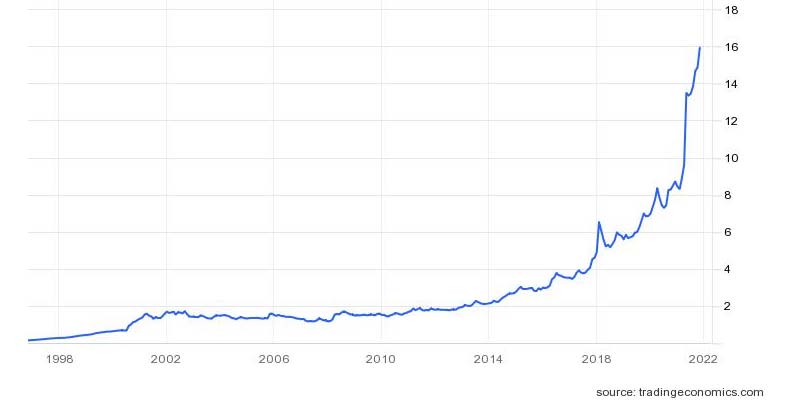
The currency has lost over 16% of its value against the US currency this year after a slide of 44% in 2021, Reuters reported.
According to the global macro models and analysts' expectations, the Turkish Lira is expected to trade at 15.90 by the end of this quarter. “Looking forward, we estimate it to trade at 17.24 in 12 months,” it noted.
Chinese yuan
Last week, the offshore yuan strengthened past 6.75 per US dollar, rising further from 20-month lows, as hopes for an end to Shanghai’s strict COVID lockdown offset weak Chinese economic data for April.
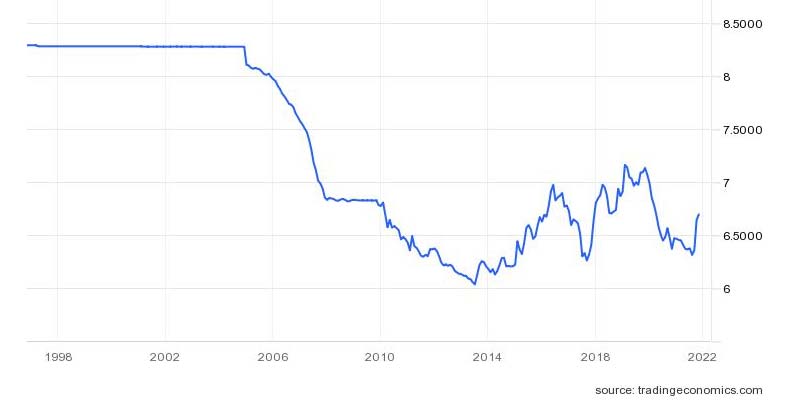
Data compiled by Trading Economics showed that the Chinese Yuan is expected to trade at 6.72 by the end of this quarter. “Looking forward, we estimate it to trade at 6.79 in 12 months,” it noted.
UAE Dirham
The United Arab Emirates (UAE) dirham traded at 3.6726 against the greenback on May 20. According to global macro models and analysts' expectations, the UAE Dirham is expected to trade at 3.67 by the end of this quarter. “Looking forward, we estimate it to trade at 3.67 in 12 months,” Trading Economics predicted.
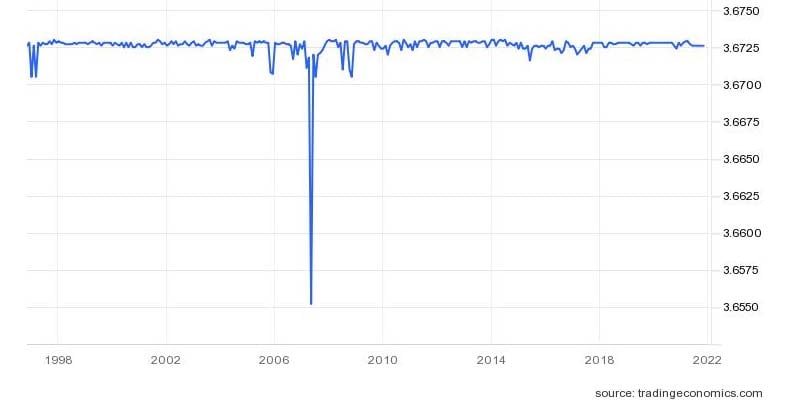
‘Bedrock of global economy’
Analysts believe that the US dollar has been a “bedrock of the global economy and a reserve currency for international trade and finance.”
Speaking to Geo.tv, Pakistan-Kuwait Investment Company Head of Research Samiullah Tariq said: "The dollar is rising due to increase in interest rates in US."
He highlighted that it has also risen against Indian rupee and Japanese yen. "Against a basket of currencies, it’s at a 20-year high," he mentioned.
However, Alpha Beta Core CEO Khurram Schehzad said: "Other currencies are more exposed to US dollar and global economy because of their trade as compared to Pakistan."
The analyst further added that other countries have more inflows when interest rates were cut by Fed. Now, the reverse is happening when Fed has raised interest rates on the greenback.
"Pakistan is relatively less exposed, but home-grown political issues have filled the gap and affected the local currency," he added.
It is worth mentioning that any other fiat currency, the dollar's relative value depends on the economic activity and outlook of the US.
It is not just the Pakistani rupee that is feeling the pinch of a dollar upsurge
There are a variety of factors that cause the US dollar to rise, but the primary factor is the demand for the dollar. If the demand for the dollar increases, so does its value. Conversely, if the demand decreases, so does the value.
Other factors that influence whether or not the dollar rises in value in comparison to another currency include inflation rates, trade deficits, and political stability.
Factors that influence the exchange rate between currencies include currency reserve status, inflation, political stability, interest rates, speculation, trade deficits/surpluses, and public debt.



